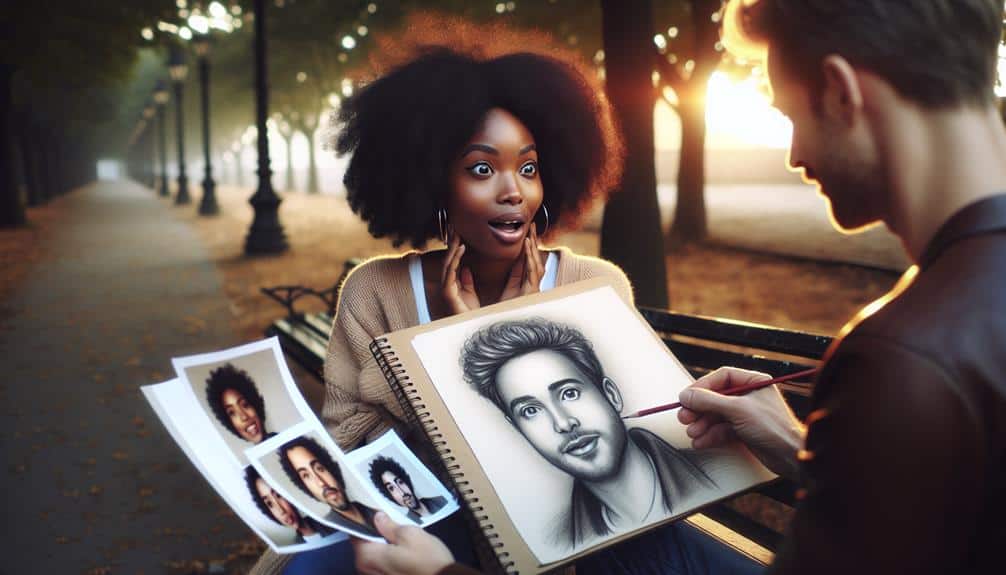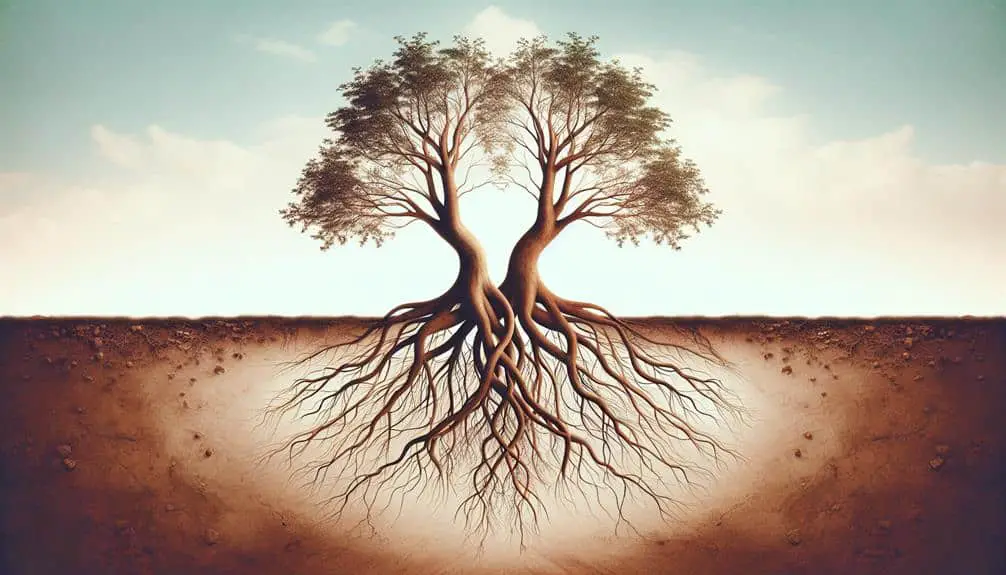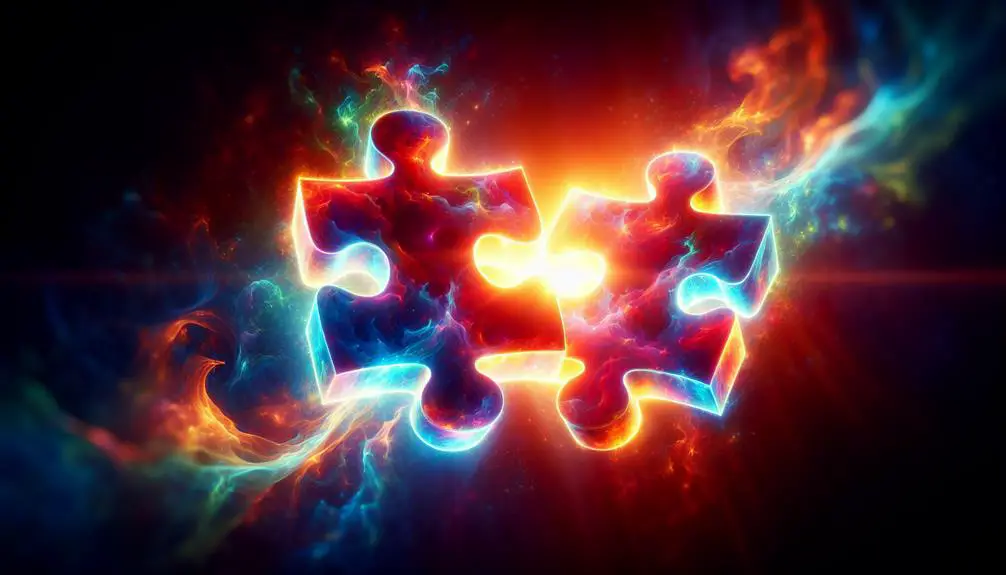When evaluating soul mate sketch artist precision, consider factors like emotions, biases, and communication styles. Subjective interpretations and cultural backgrounds shape the final representation. Your input influences the details of the sketch, while the artist's perception guides the interpretation. Enhance precision by utilizing artistic techniques and seeking feedback for accuracy. Understanding these dynamics can help you discern the intricate nuances that contribute to the artwork's authenticity.
Key Points
- Artist's perception influenced by client descriptions.
- Balancing intuition with client input crucial for accuracy.
- Incorporate feedback loops for refining sketches.
- Utilize artistic techniques and facial recognition principles.
- Seek psychological insights to enhance portrayal precision.
Factors Influencing Sketch Accuracy
When assessing factors that influence the precision of soul mate sketches, it's essential to consider the emotional state of the artist during the drawing process. The artist's emotions can greatly impact their perception and interpretation of the information provided by the client. Cognitive biases, such as confirmation bias or the halo effect, may unconsciously influence the artist's portrayal of the subject. Understanding these biases can help in minimizing their effects on the final sketch.
Additionally, communication styles play an important role in the accuracy of soul mate sketches. Different communication styles between the artist and the client can lead to misunderstandings or misinterpretations of the information being conveyed. It's crucial for the artist to adapt their communication style to match that of the client to guarantee a clear and accurate exchange of information.
Understanding Subjective Interpretations
Subjective interpretations in soul mate sketches reveal the unique perspectives and biases that artists bring to their portrayal of clients' descriptions. Artists' subjective perceptions, influenced by personal biases, play a significant role in shaping the final sketch. These subjective interpretations are often rooted in the artist's own experiences, cultural background, and artistic style.
When creating a soul mate sketch, artists rely on the client's description to visualize the features of the intended subject. However, this process isn't purely important; it's filtered through the artist's subjective lens. Personal biases can unconsciously impact how the artist interprets and translates the client's words into a visual representation.
Understanding the influence of subjective perceptions and personal biases is important when evaluating the accuracy and reliability of soul mate sketches. By acknowledging these factors, both artists and clients can have a more nuanced understanding of how individual perspectives shape the final outcome. Being aware of these aspects can lead to more open discussions and potentially improve the overall quality of the sketch.
Impact of Client Descriptions
Client descriptions wield immense influence over the soul mate sketches crafted by artists, shaping the visual representation of the envisioned subject. When considering the impact of client descriptions on the accuracy of soul mate sketches, two key factors come into play:
- Client Perception: The way in which clients describe their envisioned soul mate has a substantial influence on the details and features included in the final sketch. Clients' perceptions of their ideal partner can vary widely, impacting the level of detail provided to the artist and ultimately affecting the resemblance of the sketch to their mental image.
- Artist Intuition: While client descriptions provide a foundation for the sketch, the artist's intuition plays a vital role in interpreting and translating these descriptions into a visual representation. Artists rely not only on the specifics provided by the client but also on their own creative instincts and expertise to capture the essence of the envisioned soul mate accurately.
- Balancing Client Descriptions and Artist Intuition: Achieving a balance between client descriptions and artist intuition is essential for creating a soul mate sketch that resonates with the client's perception while also incorporating the artist's interpretation and expertise. Striking this balance is key to producing a soul mate sketch that satisfies the client's expectations and captures the envisioned subject authentically.
Role of Artists Perception
The artist's perception serves as a pivotal lens through which client descriptions are transformed into visual representations in soul mate sketches. Artistic intuition plays a vital role in this process, guiding the artist to interpret the words of the client and translate them into a tangible form on paper. Through their keen artistic intuition, skilled sketch artists can capture nuances and emotions that go beyond mere physical attributes, infusing the sketches with a depth that resonates with the client's innermost desires.
Creative expression is another key aspect influenced by the artist's perception. The way in which an artist interprets and represents the information provided by the client reflects their unique style and artistic vision. This creative process involves not only accurately depicting the features described but also imbuing the sketch with a sense of personality and connection. The artist's perception shapes every stroke of the pencil, turning a simple description into a complex and meaningful portrait that speaks to the heart.
Enhancing Sketch Accuracy
To enhance the accuracy of soul mate sketches, consider refining the process by incorporating additional client feedback loops for iterative improvements. This feedback can provide valuable insights for the artist to adjust and fine-tune the sketches, leading to a more precise representation of the soul mate.
Here are three key strategies to enhance sketch accuracy:
- Utilize Artistic Techniques: Experiment with various artistic techniques such as shading, proportions, and detailing to capture the essence of the individual more accurately. These techniques can help highlight distinctive features that are essential for recognition.
- Incorporate Facial Recognition: Integrate facial recognition principles into the sketching process to make sure that key facial features are accurately depicted. Understanding how facial features align and relate to each other can greatly improve the overall accuracy of the sketch.
- Seek Psychological Insights: Consider delving deeper into psychological insights to grasp how emotions, personality traits, and past experiences can influence one's appearance. This understanding can guide the artist in portraying not just the physical attributes but also the inner essence of the soul mate.




